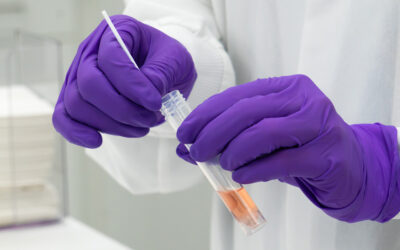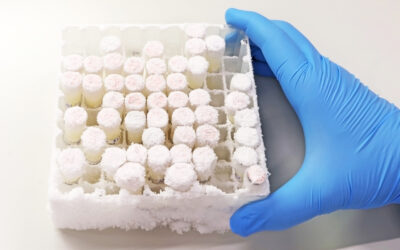Human papillomavirus (HPV) is the most common sexually transmitted infection (STI), in part because many experience no symptoms, so it is unknowingly passed between partners. This is why it is considered to be the “silent STI.” HPV is a viral infection that may result in various warts such as genital, plantar, and flat warts. It is also associated with several cancers. While most infections occur in teens and young adults, HPV infections can occur at any age.
Over 100 Different Types of HPV
There are over 100 different types of HPV, with only a handful considered to be high-risk. Currently, there are 14 HPV strains considered high-risk because of their potential to develop into cancer, including HPV 16, 18, 31, 45, and 68. Having one of these strains does not mean cancer will develop or is present, only that there is an increased chance cancer may develop. Low-risk strains typically cause no disease or symptoms but may cause genital warts. Some of the more common low-risk strains are HPV 6, 11, 42, 54, and 61, with HPV 6 and 11 being the most common strains to cause genital warts.
Due to the lack of symptoms, an infection may be easily missed until it has developed into cancer. The presence of warts is the only outward sign of infection, and most strains do not produce warts. Since there are so many strains of HPV, and the severity of disease varies with the strain, routine testing is crucial. Currently, there are three types of testing for HPV – the HPV test, the Pap test, and an HPV/Pap cotest. The HPV/Pap cotest is less preferred because it requires both tests, therefore making it less efficient. Under new testing guidelines from the American Cancer Society (ACS), Pap tests are recommended as the most frequent screening, with ages 25-65 getting them every three years. According to the ACS, getting the HPV test every five years is currently considered the gold standard. Pap smear results are obtained by visually looking at the cells on the cervix for any abnormalities, or changes, which may turn into or indicate cancerous cells. An HPV test, on the other hand, will detect particular genes associated with high-risk HPV strains. Commercial assays use the E6/E7 genes and the L1 gene; some assays will target both, whereas others may only target one. E6/E7 genes are tested for together. E6 and E7 are both oncogenes, and the detection of either means that the cells may develop into cancer. The L1 gene assists in viral entry into the cell and is unique to each strain. HPV tests are more accurate and reliable in detecting HPV than Pap tests, because they are looking at the genetics of the virus as opposed to the visual appearance of cells.
Molecular Testing to Detect E6/E7 and L1 Genes
Molecular testing, whether with commercial instruments or laboratory developed tests, are a great way to detect E6/E7 and L1 genes. Commercially available molecular testing systems can be used to differentiate between the 14 high-risk HPV strains by testing the L1 gene. By testing for specific nucleic acid targets, it can be determined if the targeted genes are present, indicating which strain has caused the infection. Even though there are 14 high-risk strains, they each have different cancer-causing potential. For example, HPV-33 is found in approximately 5% of cervical cancers worldwide, whereas HPV-16 and HPV-18 together cause at least 70% of cervical cancers, making it crucial to know which strain is causing an infection. Genetic testing cannot tell if the genes are turned on and active, only if a high-risk HPV strain is present. Positive test results may require additional testing and more frequent follow ups to see if the infection has cleared or to look for signs of cervical cancer.
Early Detection
If an HPV infection does develop into cancer, it is best to discover it sooner because more treatment options may be available. Molecular testing provides better and more accurate results by detecting the presence of certain genes and identifying the strain causing infection, compared to visually inspecting for signs of viral infection. By following the ACS’ latest guidelines for HPV testing, infection can be found and monitored earlier.
Sources
Chen AA, et.al. (2014). Human papillomavirus 33 worldwide genetic variation and associated risk of cervical cancer. Virology. 448:356-62.
https://www.ncbi.nlm.nih.gov/pmc/articles/PMC3984975/
Burd EM. (2003). Human papillomavirus and cervical cancer. Clinical Microbiology Review. 16(1):1-17. https://www.ncbi.nlm.nih.gov/pmc/articles/PMC145302/
National Cancer Institute. (2017). Study identifies crucial characteristic of high-risk HPV. Cancer Currents Blog.
https://www.cancer.gov/news-events/cancer-currents-blog/2017/hpv-viral-gene
Hernandez BY, Ton T, Shvetsov YB, Goodman MT, Zhu X. (2012). Human papillomavirus (HPV) L1 and L1-L2 virus-like particle-based multiplex assays for measurement of HPV virion antibodies. Clinical Vaccine Immunology. 19(9): 1348-52.
https://www.ncbi.nlm.nih.gov/pmc/articles/PMC3428407/
Center for Disease Prevention and Control. (2021). What should I know about screening? Cervical Cancer.
https://www.cdc.gov/cancer/cervical/basic_info/screening.htm
National Cancer Institute. (2020). ACS’ updated cervical cancer screening guidelines. Cancer Currents Blog.
https://www.cancer.gov/news-events/cancer-currents-blog/2020/cervical-cancer-screening-hpv-test-guideline
National Cancer Institute. (2021). HPV and cancer. Infectious agents.
https://www.cancer.gov/about-cancer/causes-prevention/risk/infectious-agents/hpv-and-cancer
LabCE. (2022). Low-risk and high-risk HPV types. LabCE.
https://www.labce.com/spg326557_low_risk_and_high_risk_hpv_types.aspx
Roche Molecular Systems, Inc. (2015). Cobas HPV test package insert. Cobas.
https://www.accessdata.fda.gov/cdrh_docs/pdf10/p100020s017c.pdf
Abbott. (2022). Realtime high-risk HPV.
https://www.molecular.abbott/int/en/products/infectious-disease/realtime-high-risk-hpv






0 Comments